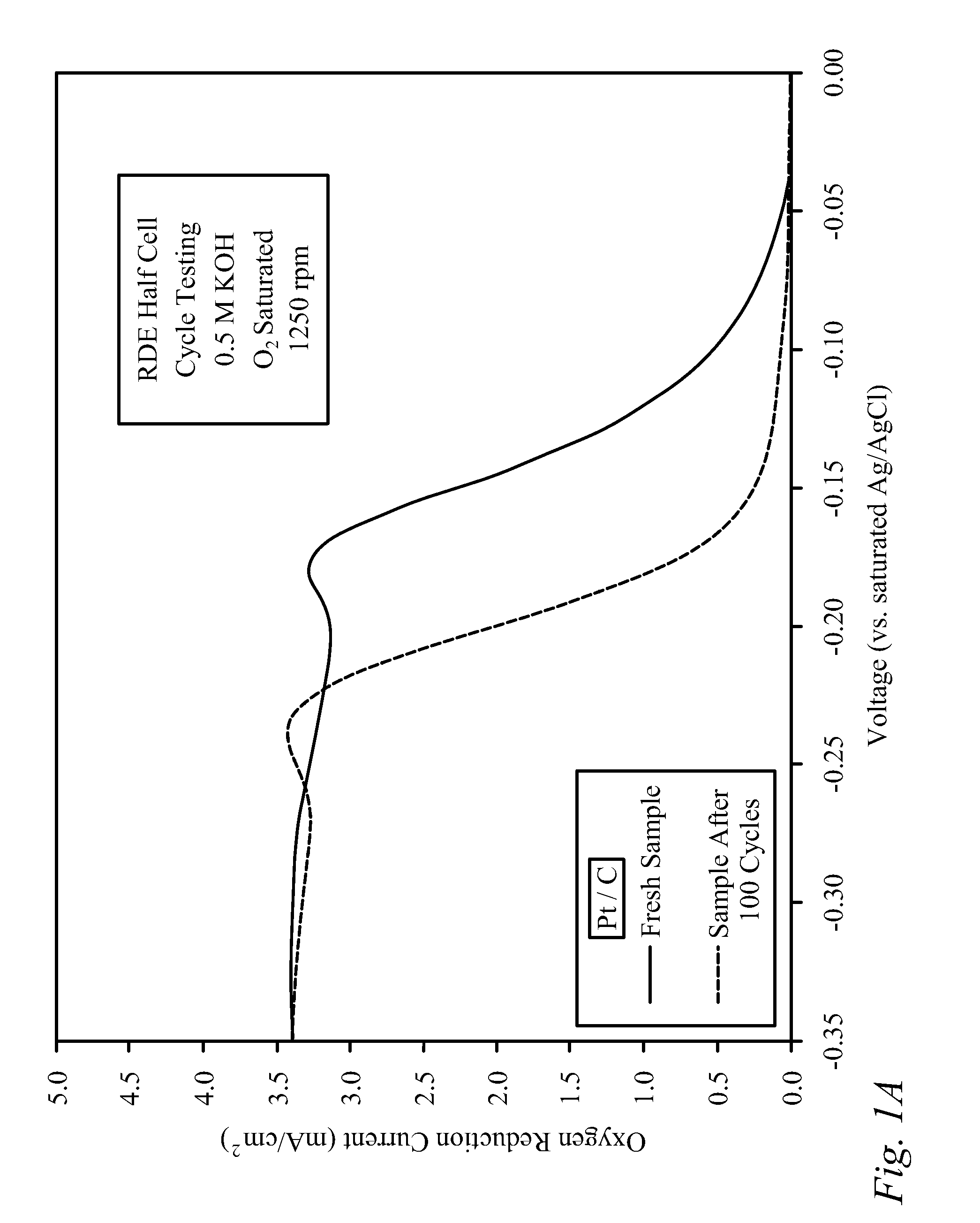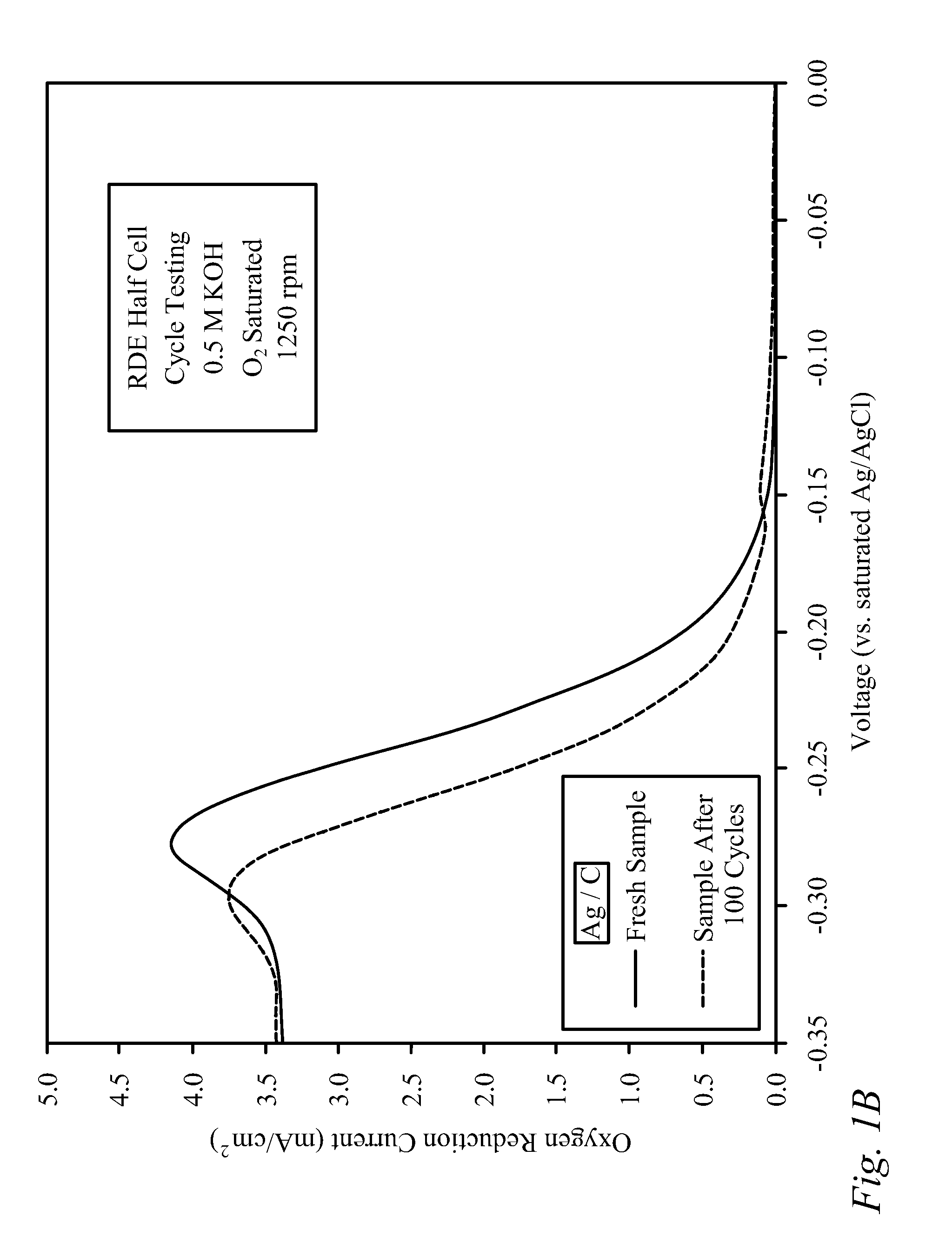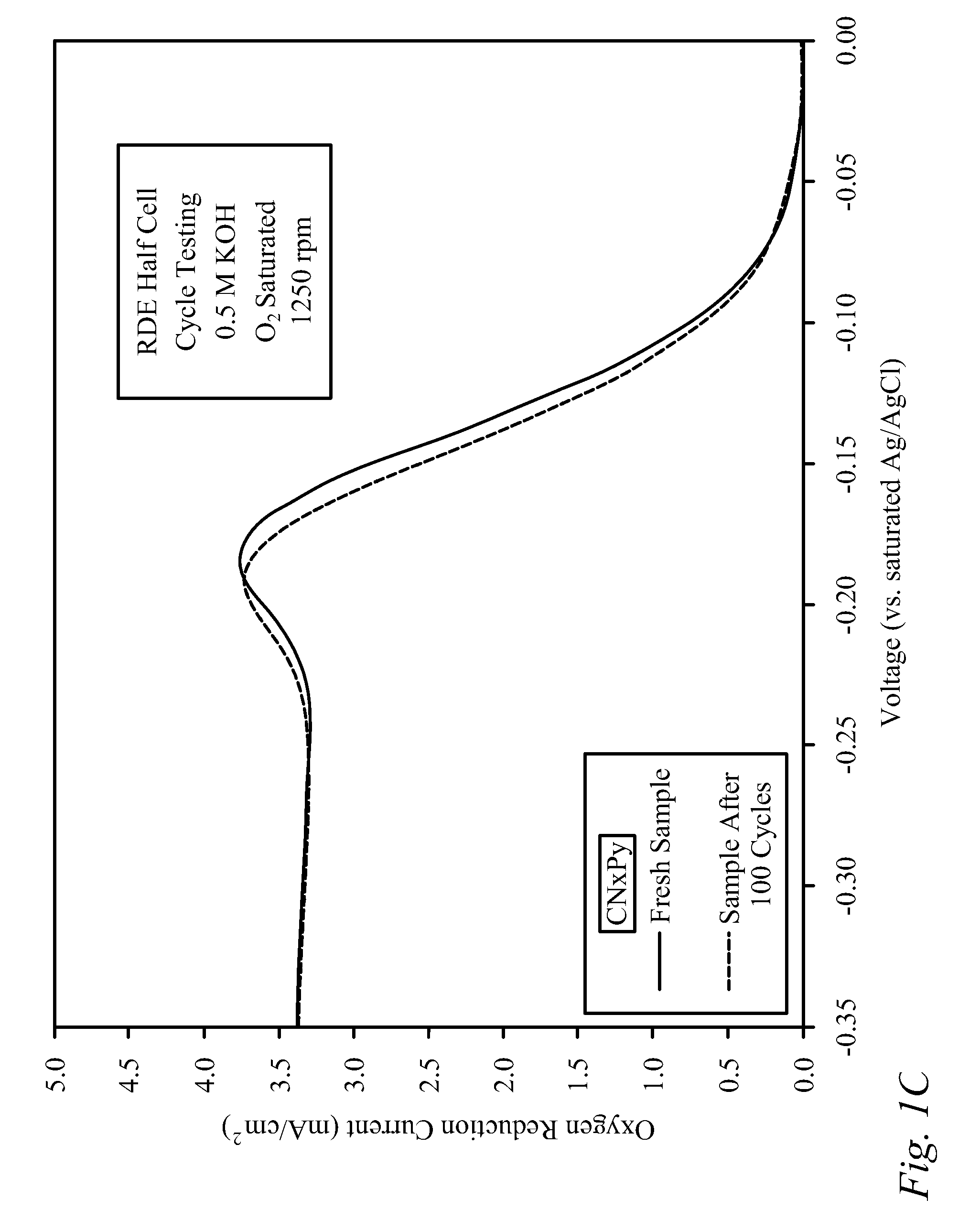Bifunctional electrode design and method of forming same
a carbon electrode and bifunctional technology, applied in the direction of electrical equipment, cell components, fuel cells, etc., can solve the problems of low surface area support, many catalysts show poor activity, and the available catalyst options are inadequate for most applications, so as to achieve high surface area support, improve activity and durability, and achieve the effect of not losing significant performan
- Summary
- Abstract
- Description
- Claims
- Application Information
AI Technical Summary
Benefits of technology
Problems solved by technology
Method used
Image
Examples
example 1
EXAMPLE #1
[0030]Bi-functional Cathode Testing of CNxPy.
[0031]Testing was performed on a doped carbon thin film to demonstrate the kinetic performance and durability of the material as a bi-functional cathode catalyst. The doped carbon, denoted as CNxPy, was prepared using a method described previously in the literature [von Deak 2010]. For activity tests, a catalyst ink was first prepared using 10 mg of catalyst, 2.5 mg of sulfonated tetrafluoroethylene (NAFION™-DuPont) binder (dissolved in ethanol), and 1.6 mL of denatured ethanol. Next, the ink was sonicated for 30 minutes and then 40 mL was deposited in 8 mL aliquots onto a glassy carbon Rotating Disk Electrode (RDE), drying in-between applications for 10 minutes with a heat lamp. The samples were tested using a potentiostat, and a rotating disk electrode (RDE) half-cell set-up that included an Ag / AgCl reference electrode, and a Pt wire counter electrode. The stability of the catalysts was examined through cycle testing in oxyge...
example 2
EXAMPLE #2
[0037]Bi-functional Cathode Testing of Fe / CNx. Testing was conducted on a Fe / CNx thin film to determine kinetic performance of the material as a bi-functional cathode catalyst. The Fe / CNx was prepared from the pyrolysis of 2% iron on carbon black in the presence of acetonitrile using a method described previously in the literature [Matter 2006]; however, after the pyrolysis, residual iron was not removed from the carbon by acid washing and thus remained in the sample. For activity tests, a catalyst ink was first prepared using 10 mg of catalyst, 2.5 mg of sulfonated tetrafluoroethylene (NAFION™-DuPont) binder (dissolved in ethanol), and 1.6 mL of denatured ethanol.
[0038]Next, the ink was sonicated for 30 minutes and then 40 microliters was deposited in 8 microliter aliquots onto a glassy carbon Rotating Disk Electrode (RDE), drying in-between applications for 10 minutes with a heat lamp. The sample was tested using a potentiostat, and a rotating disk electrode (RDE) half-...
PUM
| Property | Measurement | Unit |
|---|---|---|
| diameter | aaaaa | aaaaa |
| diameter | aaaaa | aaaaa |
| temperature | aaaaa | aaaaa |
Abstract
Description
Claims
Application Information
 Login to View More
Login to View More - R&D
- Intellectual Property
- Life Sciences
- Materials
- Tech Scout
- Unparalleled Data Quality
- Higher Quality Content
- 60% Fewer Hallucinations
Browse by: Latest US Patents, China's latest patents, Technical Efficacy Thesaurus, Application Domain, Technology Topic, Popular Technical Reports.
© 2025 PatSnap. All rights reserved.Legal|Privacy policy|Modern Slavery Act Transparency Statement|Sitemap|About US| Contact US: help@patsnap.com



